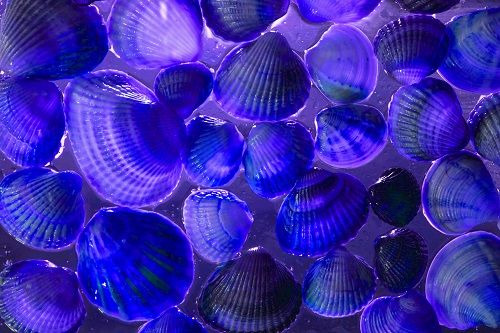Sandy beaches and warm weather have attracted people to the ocean for centuries. While many flock to activities like surfing, swimming, snorkeling and scuba diving, just as many are drawn to a favorite pastime of all ages: collecting seashells.
Shell collecting is defined as the practice of finding and identifying mollusk shells. It’s a hobby that attracts people of all ages—some so much that it becomes an obsession or even a career path. Children and vacationers alike enjoy finding shells and artists create magical works from them, like collages, wall décor, jewelry and Sailors’ Valentines.
Seashells Defined
Shells are the exoskeletons of a large group of soft-bodied, invertebrate animals known as mollusks. Some examples include slugs, snails, clams, squids, octopuses and mussels. Mollusks typically live in damp or aquatic habitats.
Shells are mainly composed of calcium carbonate that provides a calcareous casing to house the mollusks. These marine creatures are bound to the shell and cannot survive without it. When a mollusk dies, its body leaves the shell. Sometimes another form of marine life may occupy the empty shell. When collecting shells, always make sure another creature is not living in one you pick up!
Collection
Collecting seashells is a popular, meditative hobby and even passion for many people all around the world. Few activities are more relaxing than strolling along the beach looking for beautiful shells. There are groups and clubs devoted to collecting and discovering these beautiful natural wonders. There is even an entire museum devoted entirely to shells and mollusks, the Bailey-Matthews National Shell Museum on Sanibel Island in Florida.
It’s important to educate yourself on the many different shells and which ones are permitted for collection. For example, while the beaches of Sanibel Island are known for their abundant seashells, there are restrictions on those with living species inside, such as the endangered Queen Conch. Collecting such shells can result in penalties and fines. You can reach out to the Fish and Wildlife Conservation Commission in your state or the one you’re visiting to find out which shells are restricted. The best times to collect shells are at low tide or after a storm or hurricane.
Equipment
You may want to bring some shell collection equipment to best preserve the integrity of the shells you find. You’ll want a delicate tool or mesh screen to scrape away sand or debris from the shell without damaging it, and perhaps a shovel to dig into wet sand. You will also want a cloth bag or bucket to transport your finds. If you want to get serious about collection shells, you’ll want a book to help with identification and a journal to record locality and ecological data.
Storage
Shells are easy to store. Once a shell is cleaned properly, it can be stored in a cabinet, drawer or shelf.
Visit this link to learn more about the magic of seashells and Sailors’ Valentines.

Leave a Reply